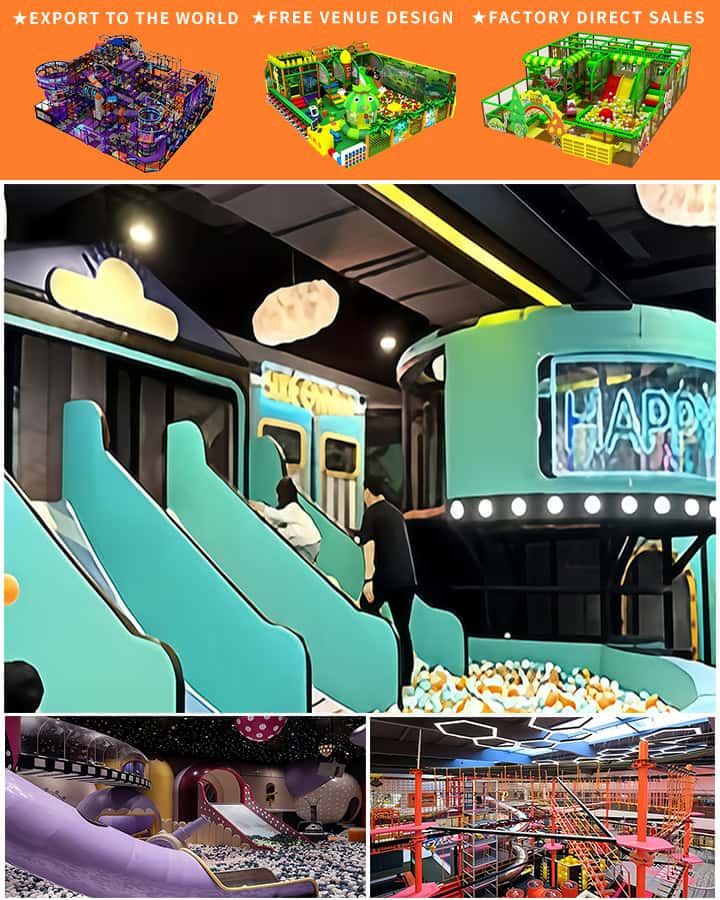In an increasingly digital world where screen time is often prioritized, creating a space for children to engage in physical play has never been more important. One of the best solutions to this modern dilemma is investing in indoor playground equipment. This comprehensive guide will help you understand the various types of indoor playground equipment available and how to choose the right one to create a fun, safe, and enriching environment for kids.
Types of Indoor Playground Equipment
1. Climbing Structures
Climbing structures are fundamental to any indoor playground. They not only provide physical activity but also help develop motor skills and boost confidence. Look for structures with varying difficulty levels to cater to different age groups. These can include climbing walls, ladders, cargo nets, and rope climbs.
2. Slides
Slides are a classic component of playgrounds and add an extra layer of fun. Choose from straight slides, wavy slides, or even spiral slides. Ensure that the material used is safe and durable, and consider the height and steepness to match the age group of the users.
3. Trampolines
Indoor trampolines are excellent for promoting cardiovascular health and coordination. They come in various sizes and shapes, including traditional round designs and newer innovations like hexagonal shapes. Safety should be paramount, so opt for trampolines with safety enclosures and padded edges.
4. Interactive Play Equipment
Interactive play systems incorporate elements like touch screens, sound effects, and lights to keep kids engaged. These are great for cognitive development and can include interactive panels, sensory games, and educational modules.
5. Soft Play Areas
Soft play areas are perfect for toddlers and young children. Filled with foam blocks, ball pits, and soft mats, these areas allow for safe exploration and imaginative play. Make sure the materials are non-toxic and easy to clean.
6. Gymnastic Equipment
 For older children or those interested in developing their gymnastic skills, consider adding bars, balance beams, or miniature trampolines. These pieces of equipment help improve strength, flexibility, and balance.
For older children or those interested in developing their gymnastic skills, consider adding bars, balance beams, or miniature trampolines. These pieces of equipment help improve strength, flexibility, and balance.
7. Role-Playing Areas
Role-playing zones encourage social interaction and creativity. Set up mock kitchens, shops, or doctor’s offices where kids can role-play different scenarios. These areas are great for developing social skills and imagination.
Factors to Consider When Choosing Indoor Playground Equipment
1. Age Appropriateness
Always consider the age range of the children who will use the equipment. Some pieces are designed specifically for toddlers, while others are better suited for older kids. Ensure the equipment matches the developmental stage of your intended users.
2. Safety Features
Safety should be your top priority. Look for equipment with rounded edges, non-toxic materials, and stable construction. Cushioned floors and padded surfaces can prevent injuries from falls.
3. Space and Layout
Measure your available space before purchasing equipment. You’ll need to ensure there is enough room not just for the equipment but also for safe movement around it. Consider the flow of the playground to avoid overcrowding and potential collisions.
4. Material Quality
Invest in high-quality materials that can withstand heavy use. Durable plastics, reinforced seams, and sturdy metal frames are essential for long-lasting equipment.
5. Ease of Cleaning and Maintenance
Given that indoor playgrounds can attract dust and dirt, select equipment that is easy to clean and maintain. Materials that are resistant to stains and moisture will save you a lot of hassle.
6. Customization Options
Look for equipment that offers customization options. This allows you to tailor the playground to fit your specific needs, whether it’s incorporating your brand colors or adding educational components.
Benefits of Indoor Playground Equipment
Physical Health
Regular use of indoor playground equipment promotes physical fitness by encouraging activities like jumping, running, and climbing. This helps in reducing childhood obesity and improving overall health.
Cognitive Development
Interactive and educational equipment stimulates cognitive development through problem-solving and sensory experiences.
Social Interaction
Group play encourages social skills such as sharing, cooperation, and communication. It also provides a safe environment for children to make friends and learn teamwork.
Emotional Well-being
Physical activity releases endorphins, which can improve mood and reduce stress. A well-rounded play area contributes to emotional well-being by providing a joyful and engaging environment.
Conclusion
Creating an indoor playground filled with carefully selected equipment can provide endless hours of fun and developmental benefits for children. By considering factors such as age appropriateness, safety features, and material quality, you can design a space that is both enjoyable and beneficial for kids of all ages. With the right indoor playground equipment, you can transform any space into a vibrant hub of activity that promotes physical fitness, cognitive growth, and social interaction.




